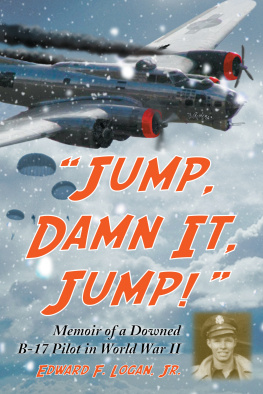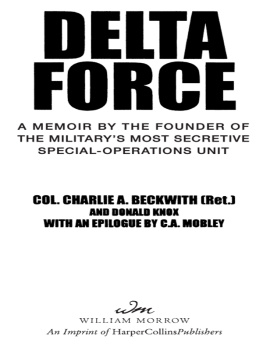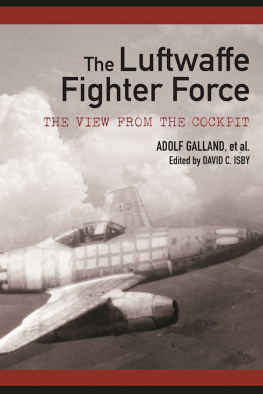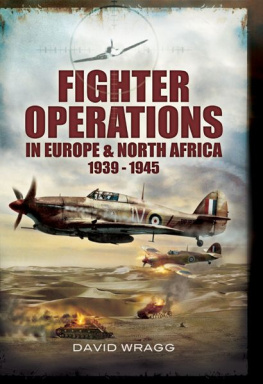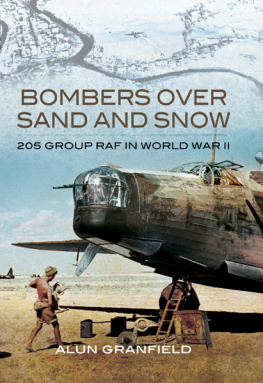
Jump, Damn It, Jump!
Memoir of a Downed B-17 Pilot in World War II
EDWARD F. LOGAN, JR.

McFarland & Company, Inc., Publishers
Jefferson, North Carolina
LIBRARY OF CONGRESS CATALOGUING DATA ARE AVAILABLE
BRITISH LIBRARY CATALOGUING DATA ARE AVAILABLE
e-ISBN: 978-1-4766-3577-4
2006 Edward F. Logan, Jr. All rights reserved
No part of this book may be reproduced or transmitted in any form or by any means, electronic or mechanical, including photocopying or recording, or by any information storage and retrieval system, without permission in writing from the publisher.
Cover illustration by Mark Durr; inset 1st Lt. Edward F. Logan, Jr., October 1944
McFarland & Company, Inc., Publishers
Box 611, Jefferson, North Carolina 28640
www.mcfarlandpub.com
To my father and mother;
my wife, Betty;
and my instructors in the
Eastern Flying training Command
of the U.S. Army Air Force
Acknowledgments
I would like to begin these acknowledgments with some words about the people to whom this book is dedicated.
The first of those people are the ones most responsible for my early years of growth, and for my personal achievements during service in the Army Air Corps throughout World War II and in my early adult life afterward. These are the people who guided and nurtured me and supported my every effort to succeed. They stood solidly behind me with unflagging encouragement during almost two years of arduous Aviation Cadet School training and the demanding Army Air Corps training that followed. These people are, of course, my wonderful father and mother.
Words of dedication and praise go also to my lovely wife, Betty, for her valued assistance in the completing of this book. It would never have been finished without her tireless efforts in typing and retyping the manuscript. I deeply appreciate her help.
Finally, my dedication mentions the ground and flight instructors in the Eastern Flying Training Command of the U.S. Army Air Force who energetically and fastidiously trained me for the difficult tasks I would face in aerial combat. I owe them a deep debt of gratitude. I feel that I actually owe my many successes in that great war, and even my eventual survival, to the marvelous training provided by these dedicated people.
Other acknowledgments must include many people, government services, and organizations who provided immeasurable assistance to me in writing this book. They offered direction, sources of historical data, and factual information relevant to my 34th mission and my travels and associations while on the ground in Slovenia in March of 1945. In addition, I am grateful to those who supplied me with some of the pertinent recorded history of the 15th Air Force, principally its 5th Wing and the 483rd Bomb Group (H), during its period of operations in the Mediterranean Theater during World War II.
In view of their contributions, I offer acknowledgment and thanks to:
The Embassy of the Republic of Slovenia
(Washington, DC)
General Viktor Krajnc, M.Sc.,
Chief of the Slovenia Armed Forces;
The Republic of Slovenia, Ministry of Defense,
Ljubljana, Slovenia
Mr. Matija Zganjar, Curator, Museum of Modern History,
Ljubljana, Slovenia
Mr. David A. Giordano, National Archives,
College Park, Maryland
Air Force Historical Research Agency,
Maxwell Air Force Base, Alabama
Bolling Air Force Base,
Historical Records,
Washington, DC
Mr. Jacob L. Grimm, Archivist (deceased),
483rd Bomb Group Association
Air Forces Escape and Evasion Society;
BritishForces.Com
The Library of Congress,
Washington, DC
National Archives,
Washington, DC
Fifteenth Air Force Association,
March Air Reserve Base, California
Mr. Michael Lombardi,
Historical Archives,
BoeingSeattle, Washington
John W. Leland,
Deputy Command Historian,
Department of the Air Force,
Air Mobility Command Headquarters,
Scott AFB, Illinois
Ms. Sue Knopf
Preface
I was blessed with a patriotic and aviation-oriented family. My father, Edward F. Logan, in his leisure time, was a private pilot who regularly flew his two airplanesa Kinner Bird biplane and a Loening Commuter amphibian, and I flew with Dad often when I was a boy.
My sister Mari, seven years older than I, was also a pilot. She received her student pilots license at sixteen and regularly flew Dads biplane. By age eighteen, she was flying one of O.M. Goodsells Ford Tri-Motor airplanes. Shortly after her eighteenth birthday, she soloed the Ford Tri-Motor with chief maintenance supervisor Gil Minnic as her copilot. She was a maintenance instructor specializing in Allison liquid cooled aircraft engines for Embry-Riddle Aviation Schools during World War II.
My sister Jane, three years older than I, was an enlisted WAAC (Womens Army Auxiliary Corps) in a tank battalion and served as a map specialist during World War II.
My brother Bob, three years younger than I, was a tail gunner on a B-24 during World War II, and my brother Glen, ten years younger than I, also became a pilot and was popularly known in south Florida as the Flying Fisherman. In 1976, in his early forties, he disappeared while flying a light twin-engine airplane from Port au Prince, Haiti, to Lantana, Florida.
My sister Patricia, five years younger than I, worked for an army tent fabrication company during World War II, and was an avid hunter and sports racing boat competitor in South Florida.
I was attracted to the Army Air Corps because I wanted to serve my country by actively defending freedom. I wanted to be a part of the very important role that American air power would play in World War II.
This book outlines my progression as a determined would-be pilot from the outset of my Army Air Corps career through my training, my journey to the air wars theater and eventually to my thirty-fourth combat mission, where Jump, damn it, jump became a stark reality. It also highlights the success of the sustained application of air power by the United States Army air forces in the Mediterranean theater of operations during World War II, as conducted by the Fifteenth Air Force, originally from its bases in North Africa and later from bases in Southern Italy.
It is interesting to review the evolution of World War II. In the 1940s Hitler continued his far-encompassing conquests and occupation of much of Europe, portions of Africa, many of the countries bordering the Mediterranean Sea and the large islands within it, as well as several mid-eastern European countries. Further conquests by the German military had to be halted and the existing occupations reversed. This reversal could be accomplished only by chasing the German military from the nations they occupied.
To accomplish the liberation of these nations from Hitlers grasp, second and third fronts of Allied military pressure had to be added to the fierce ongoing war in Europe proper. The most significant of these newly required battle fronts were in the Mediterranean area.
To be able to eclipse the German military presence at their back door, so to speak, these fronts first had to force the Germans out of Africa and occupied countries bordering the Mediterranean Sea ... all the way to Italy and Southern France. German military forces would then have to be pursued northward through Sicily, Italy, Yugoslavia and other occupied countries of southeast Europe to meet the advanced Allied armies fighting Hitlers military in northern Europe itself. To accomplish this gigantic task, large armies and masses of air power would be required. The purpose of the air power was to destroy every part of the German militarys manufacturing and petroleum complexes, as well as its far-reaching transportation systems.
Next page
